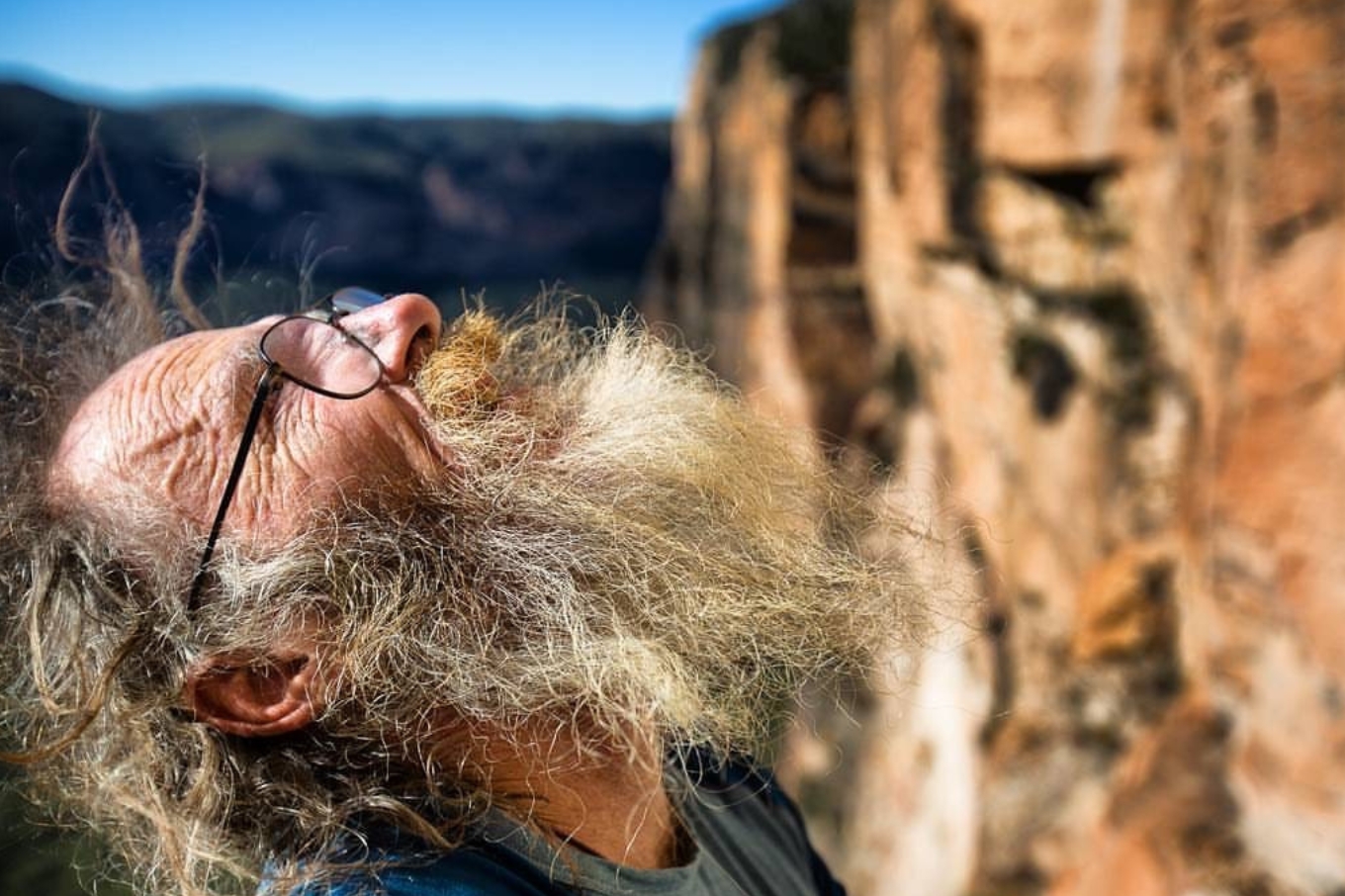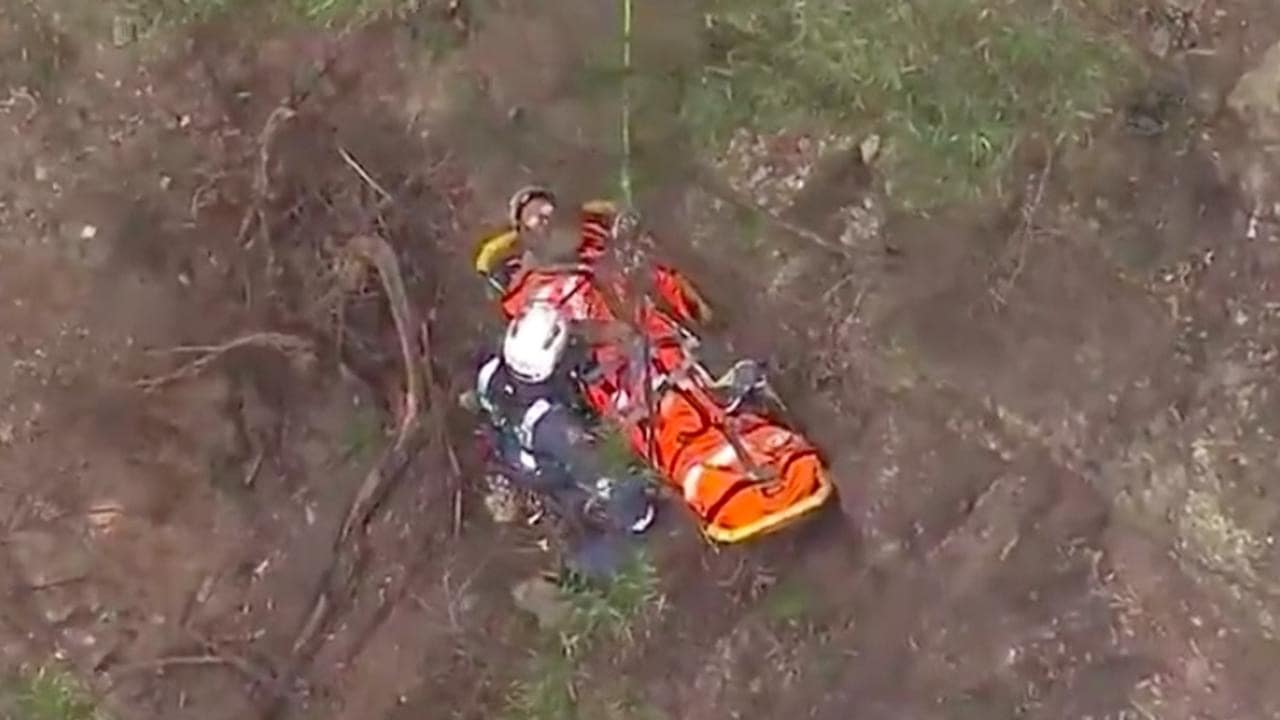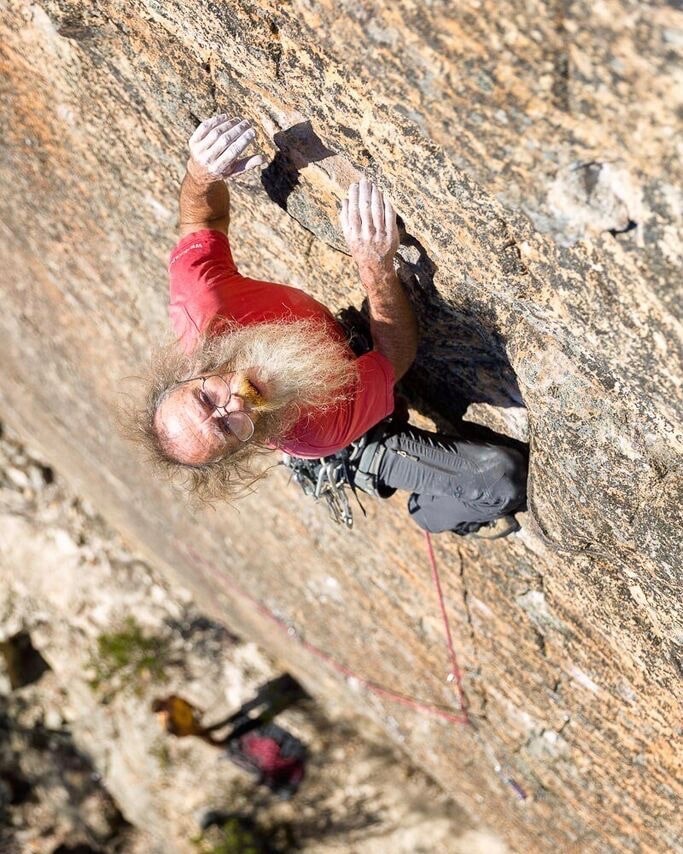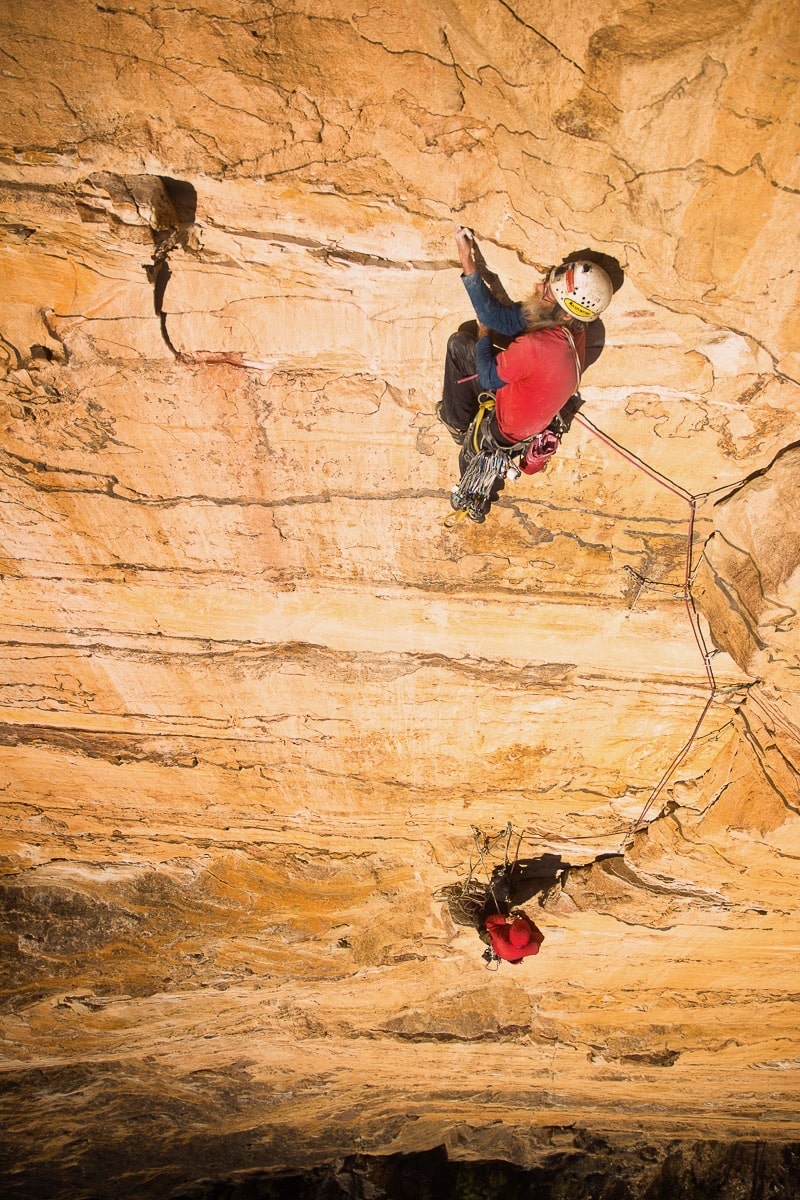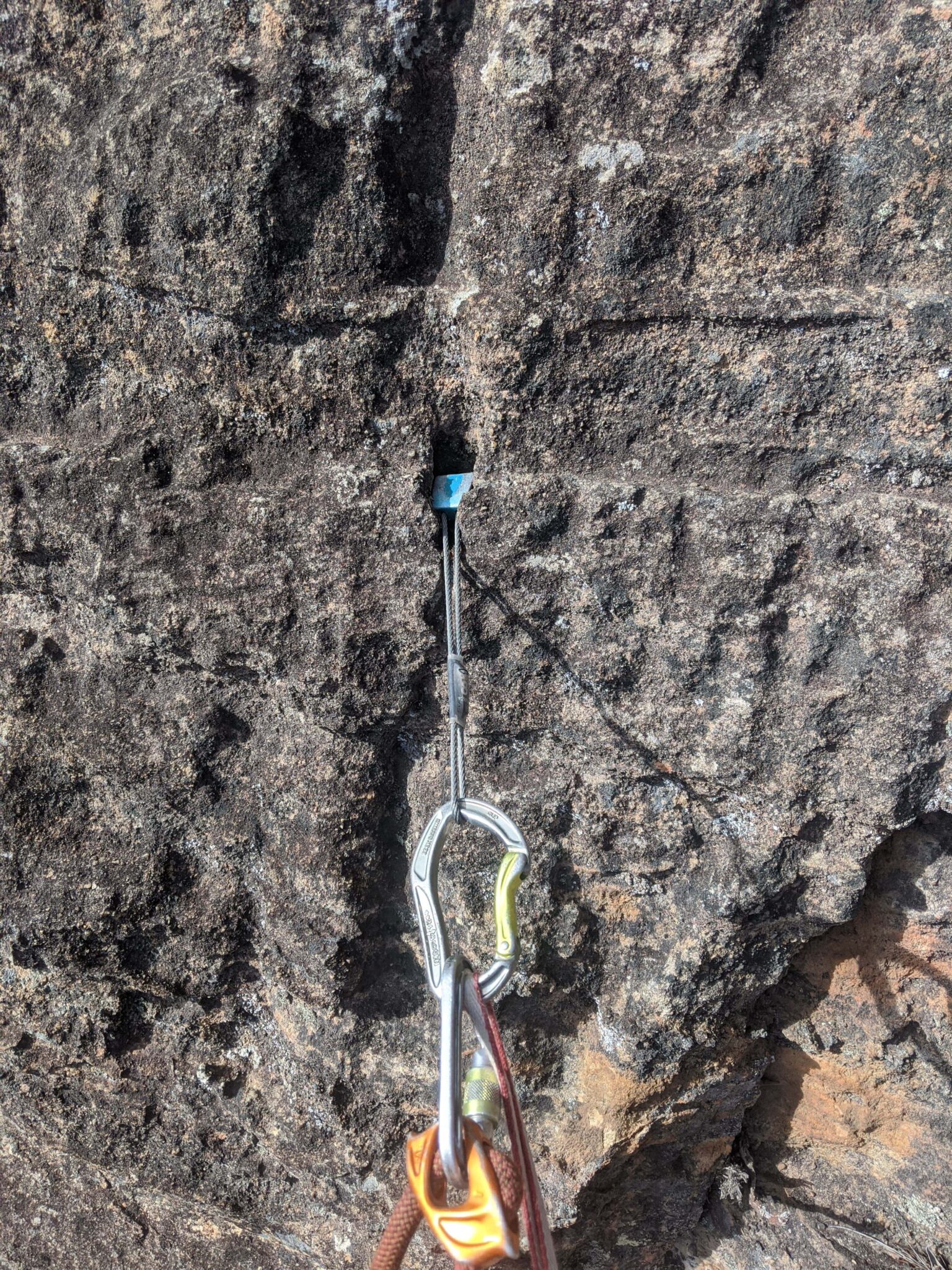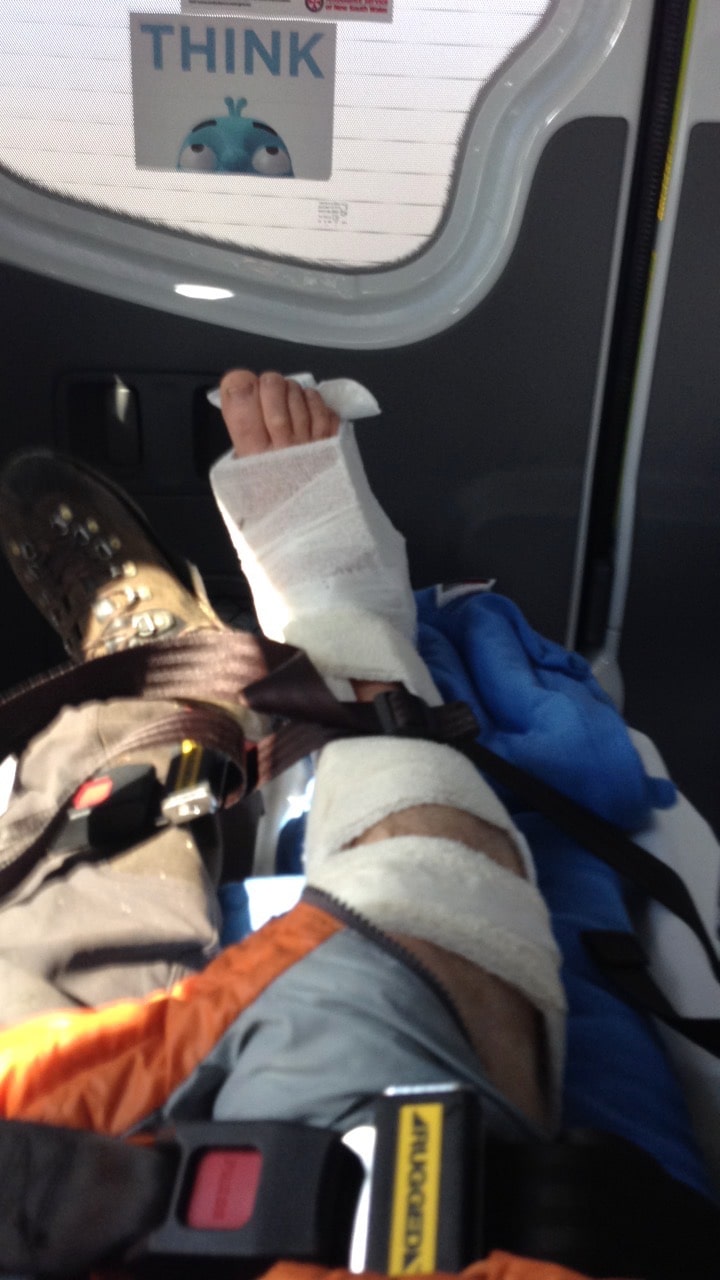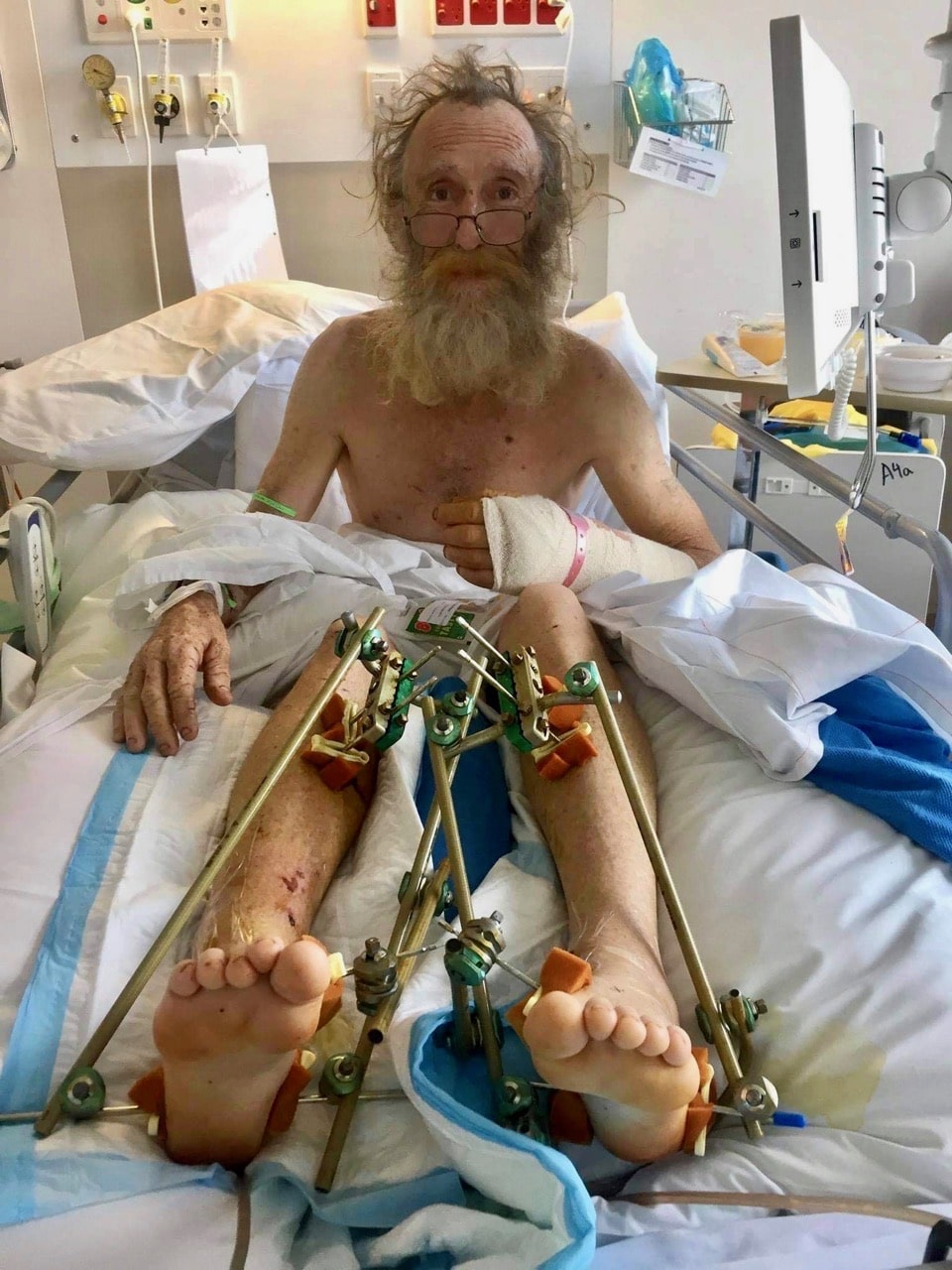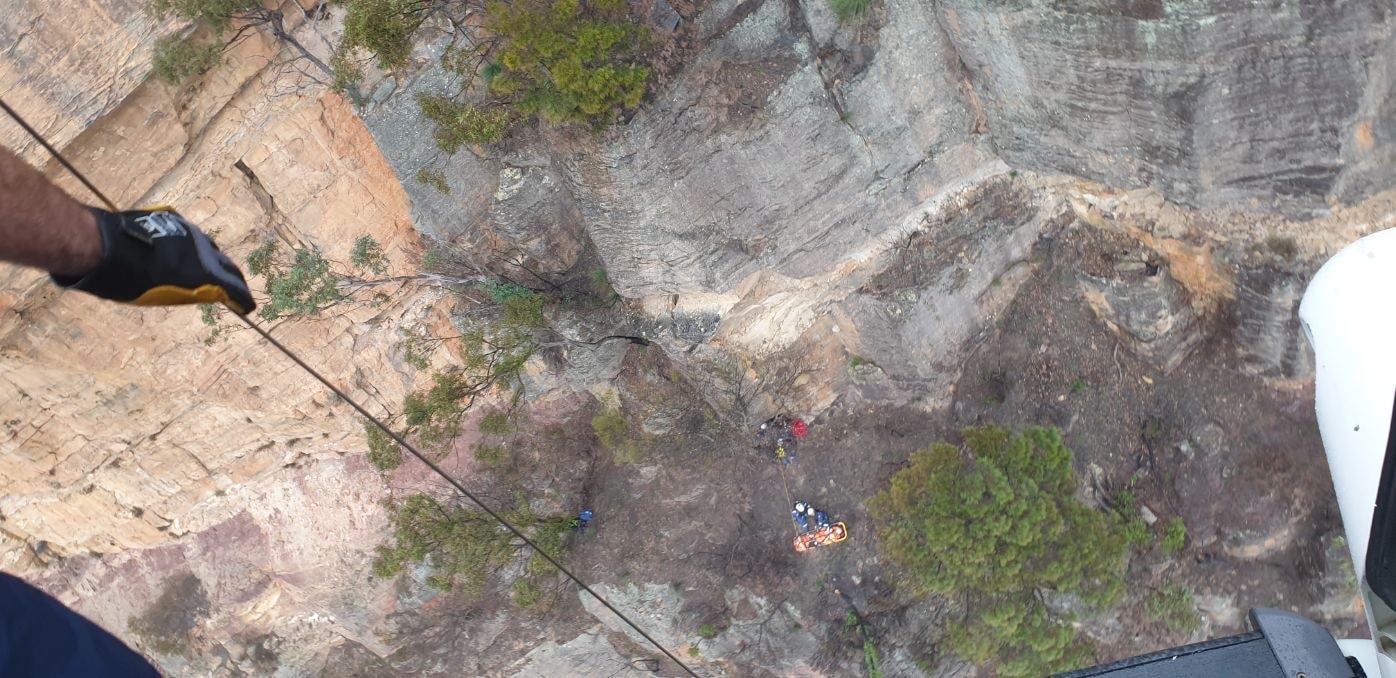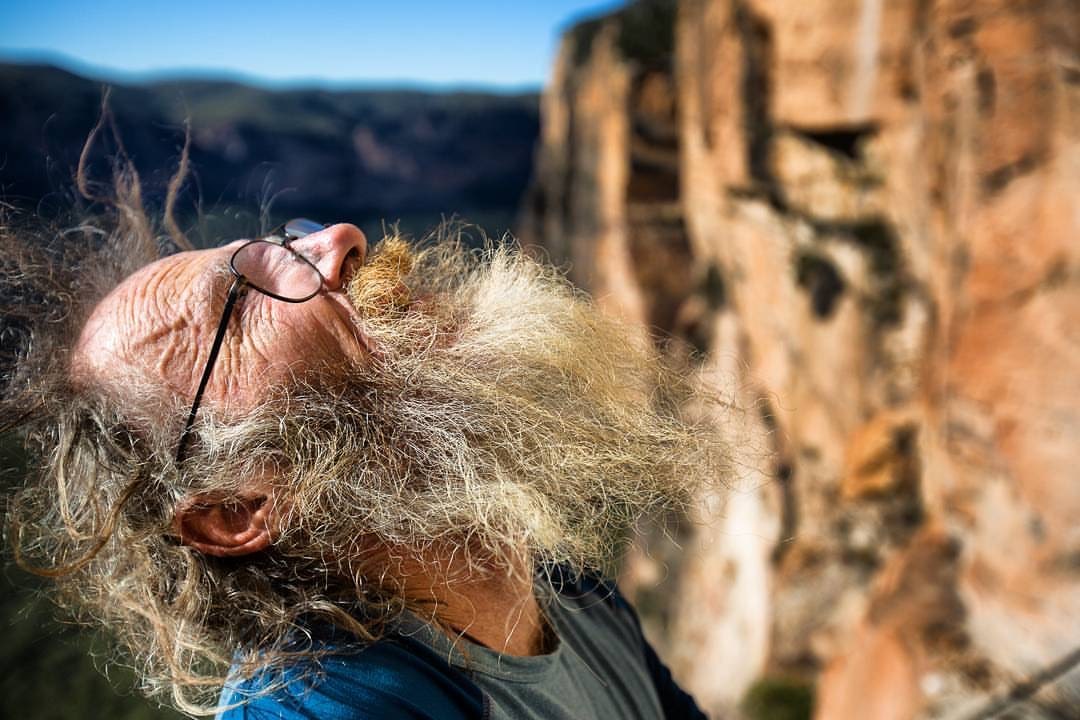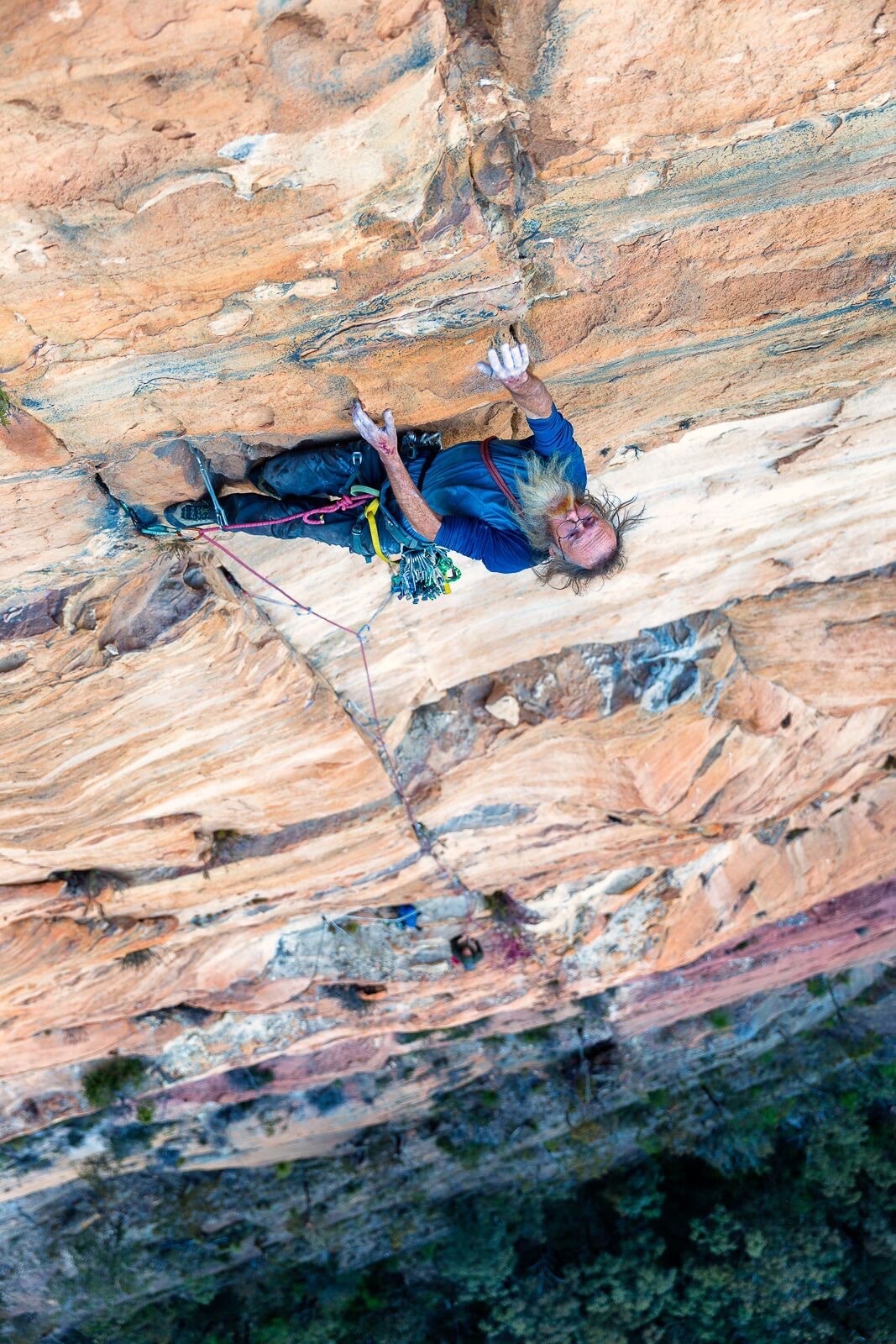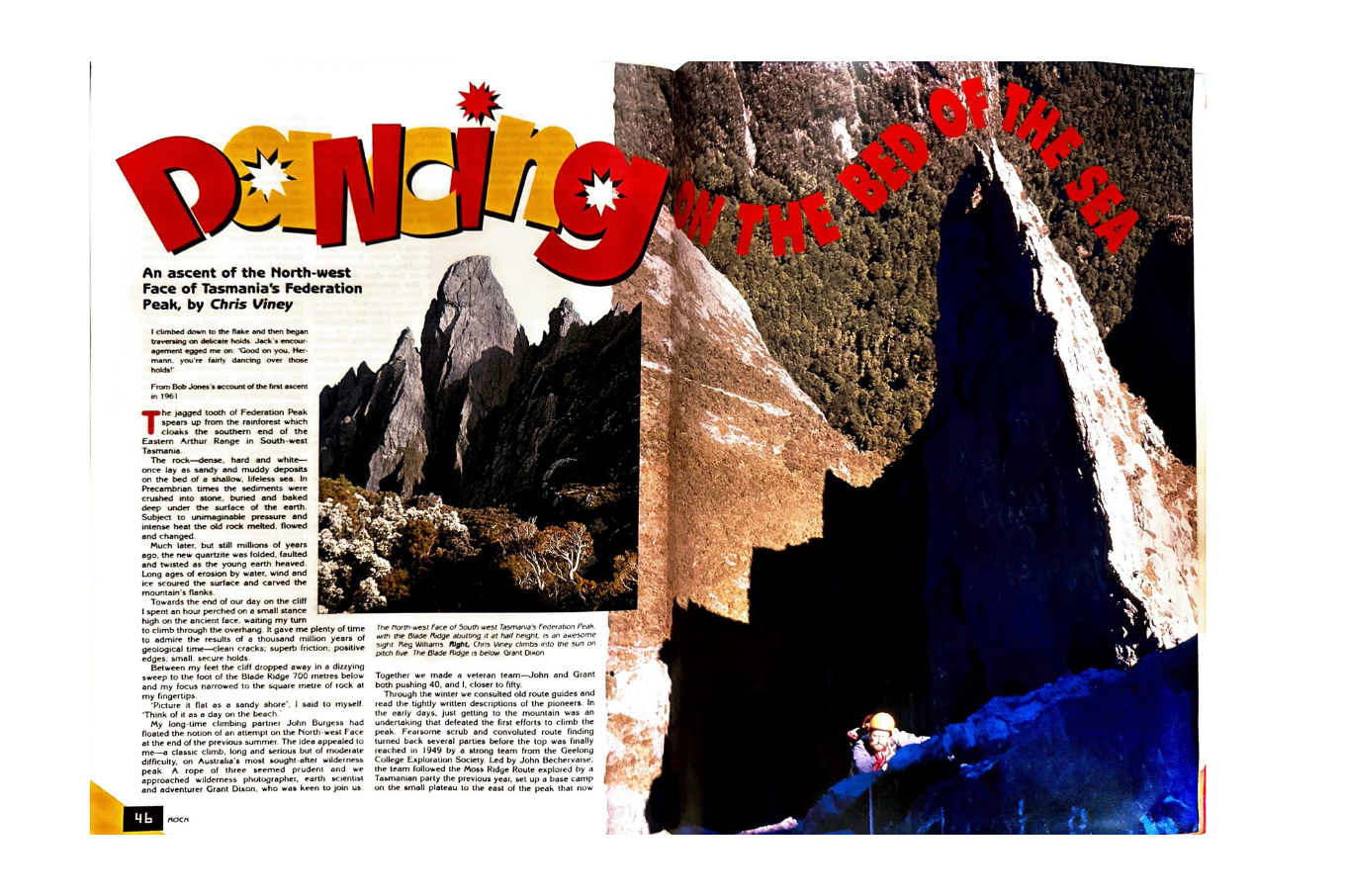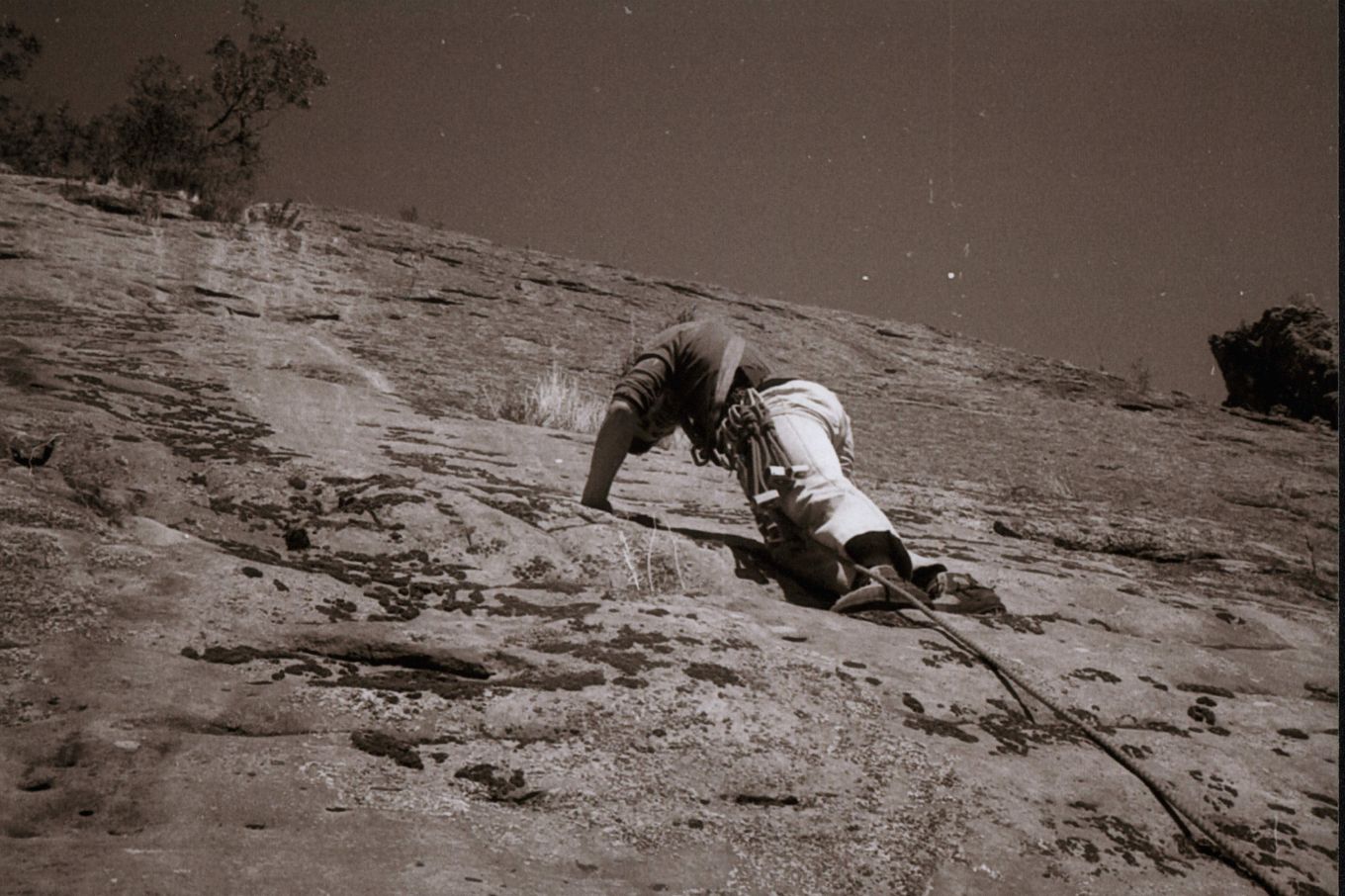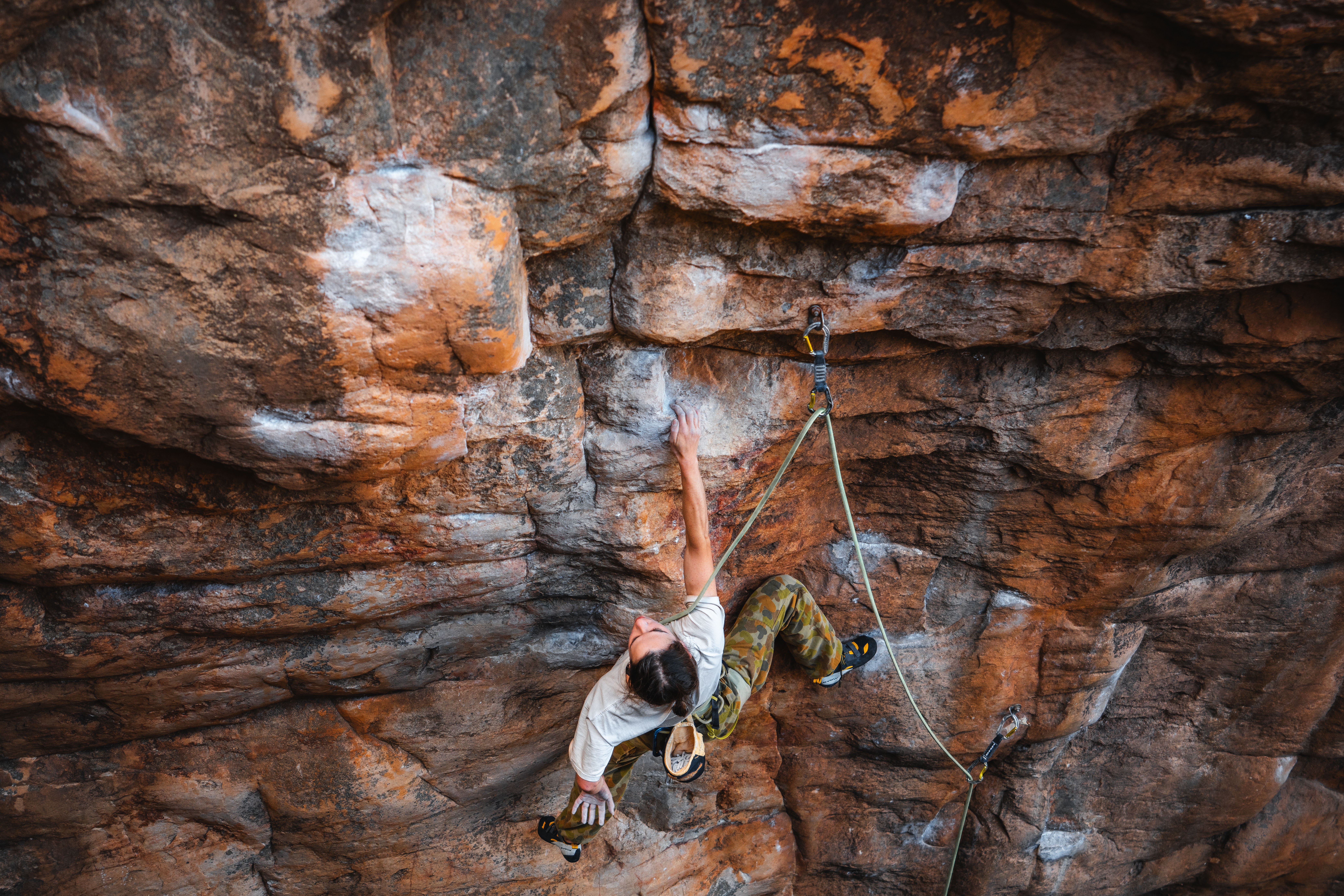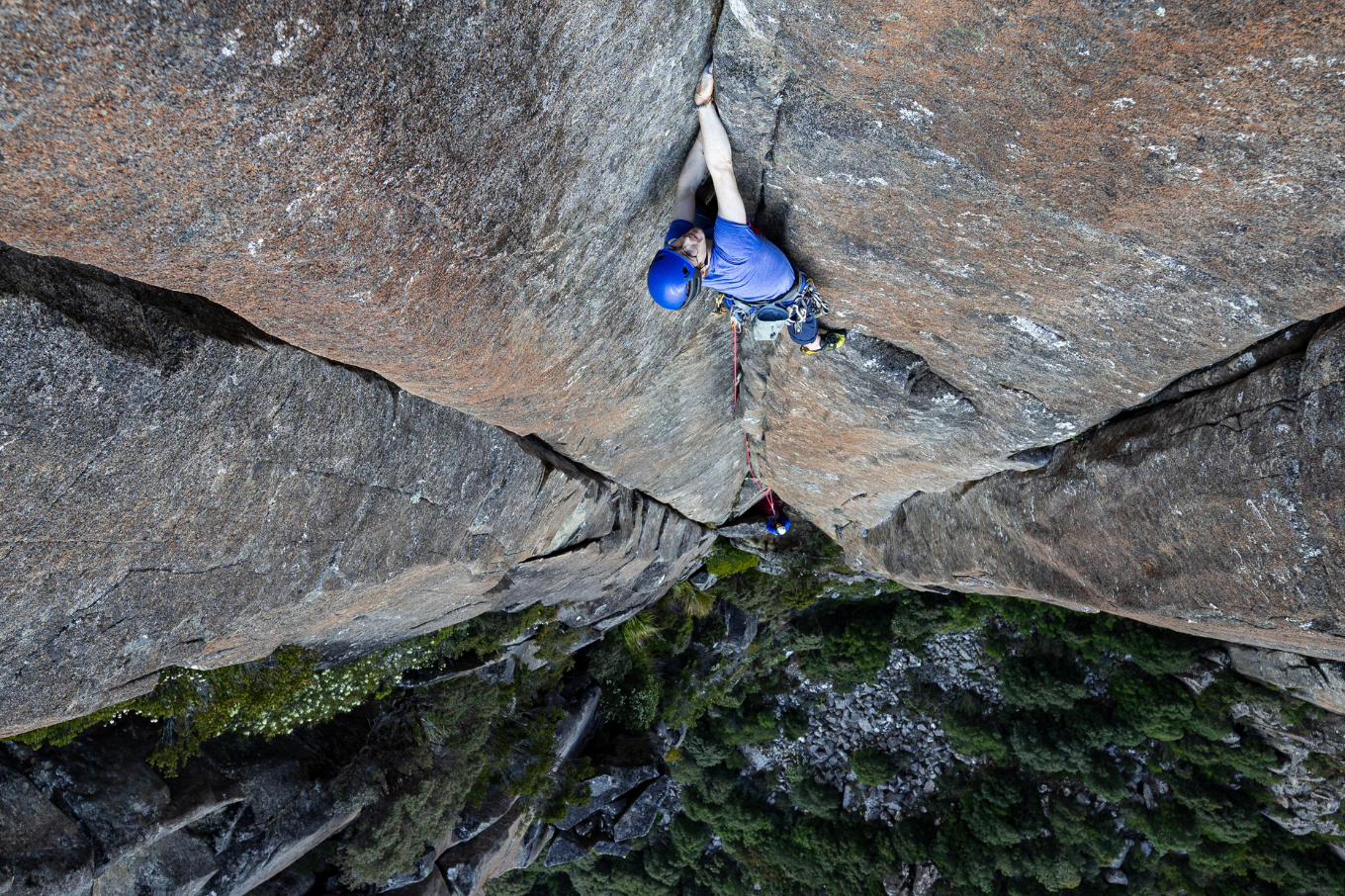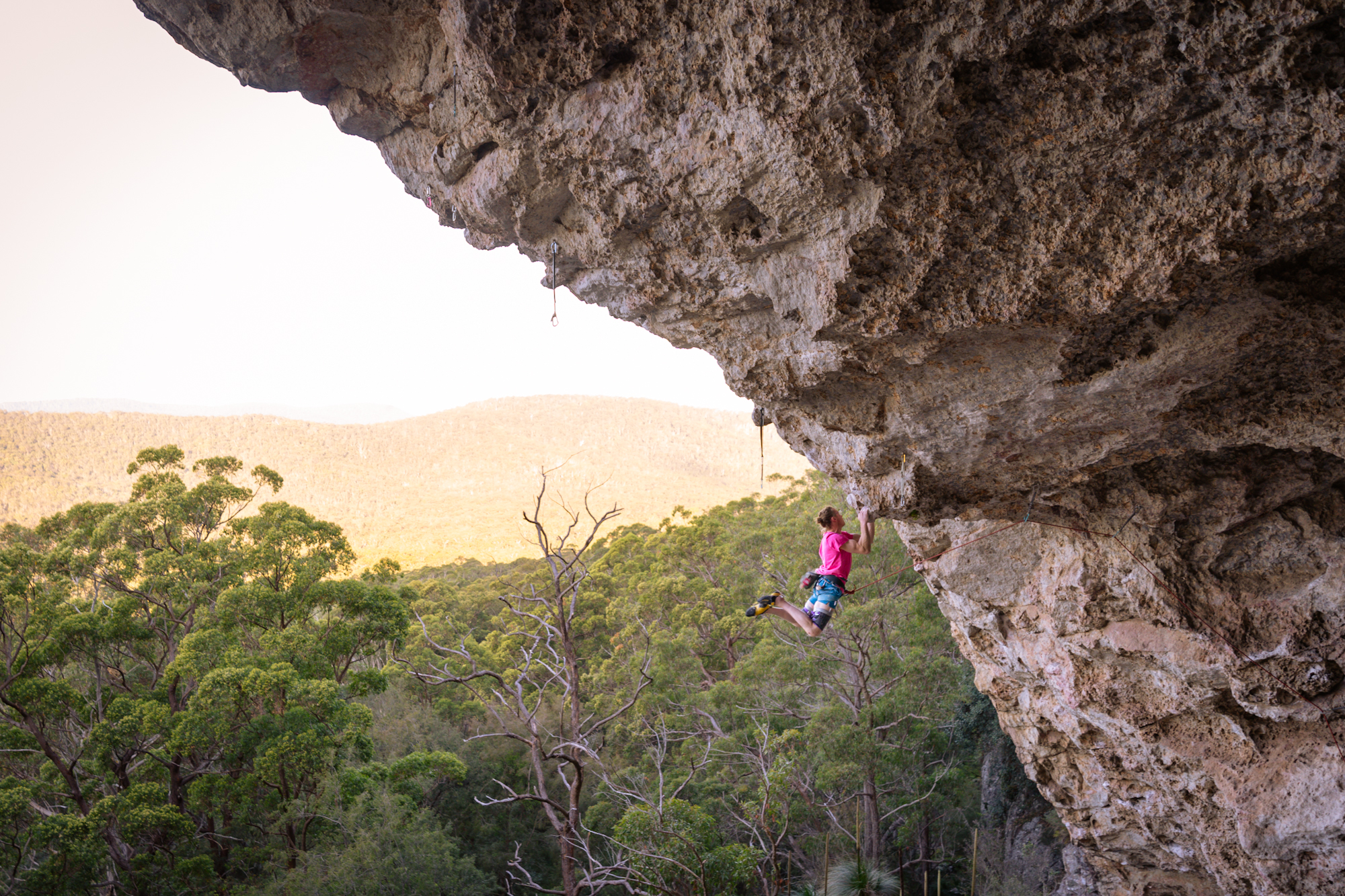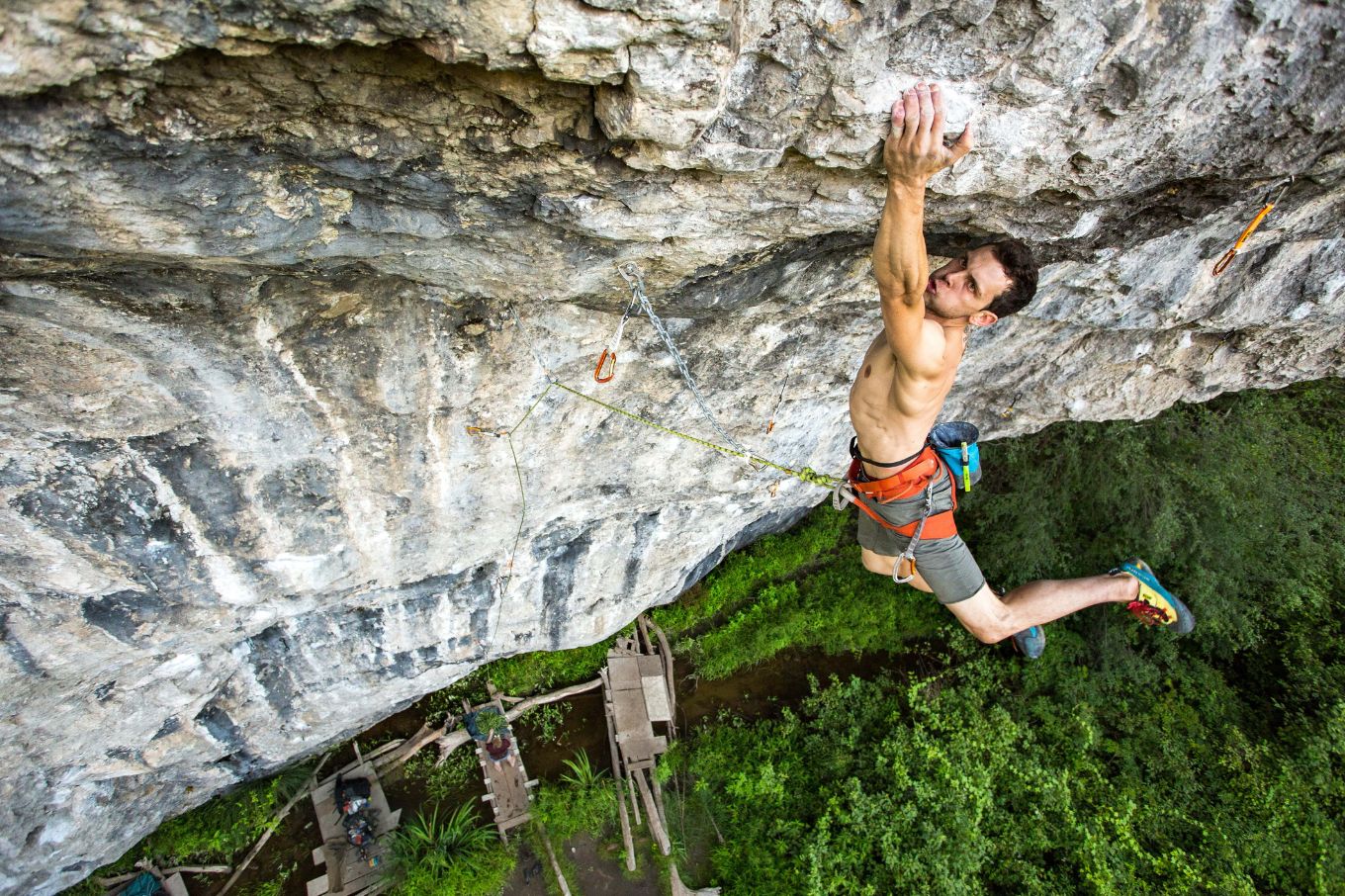Finding my feet, after a break | Macciza Macpherson
Words: Macciza Macpherson
Three years ago, Blue Mountains trad legend Macciza made the news as he was choppered off the side of a cliff, having survived a terrifying fall that shattered both his legs and a wrist. He reflects on his (many) accidents, and what exactly “recovery” means.
Round 1
I think any serious climber has been in much the same situation… Project blown due to injury—a split tip, tweaked finger, or pulled muscle. That’s where I was in 2017.
“Damn it, I can’t believe it… I’ve blown our projects! Not now, not when we are so close, this will put us back months!” The thoughts are agonising enough to distract me from my right knee, which I suspect I have either dislocated or broken.
I’m shattered, I’ve totally ruined my ability to climb. My knee is equally shattered, but the greater pain seemed to be the destruction of my dreams, something far harder to accept at the time than the mere physical injuries. How am I going to explain this to the guys?
To add insult to injury, the attending paramedics deny me my Joe Simpson moment. I’m only several metres from their ambulance. I tell them I can crawl, they tell me to await a suitable stretcher. I attempt to crawl, unsuccessfully. They restrain and medicate me further. At the hospital no breaks are found and I’m discharged in a leg brace to get follow-up scans to further diagnose.
Later follow-up reveals I have completely ruptured the MCL, ACL and PCL, ripped off a small bit of bone with a tendon, and suffered a rather large tear to my meniscus. The doctors recommend surgery to replace or repair the cruciate ligaments.
“What do you want to be able to do after surgery?” they ask.
I explain my intention to return to “climbing, off-track bushwalking, snowshoeing, ice climbing and trekking”.
The surgeon is more focussed on me “actually being able to even walk properly, let alone climb”, with no guarantees of the former and little likelihood of the later. To my mind, all those things I listed are part of “walking normally” and I am committed to continuing my climbing career.
Due to the extended wait time, I decide to embark upon a conservative approach and start physio at the local hospital. A lot of it is extremely demoralising given my condition. Simple exercises of merely tightening and relaxing certain muscles seem almost impossible, and I can’t work out if it is the mental or physical part that is the real problem. Foundational exercises to raise my foot slightly off the bed, or bending my knee to raise my leg, need assistance at first or else are barely possible. I commit myself to my home exercise regime backed up by a supportive physio.
Learning to walk again is a complex and frustrating experience of a half step forward, a slight pause and a stagger backwards. Regaining the lost muscle takes a long time and I’ve forgotten the finer points of walking. A bout of sciatic/pinched nerve in my good leg ultimately teaches me that the pain I am feeling in my brain is just due to a nerve misfiring and can kind of be ignored, a lesson which will unknowingly come in quite handy later.
I managed to get back to climbing within the year as I planned, and over the following few years saw a return to form. My climbing style had changed substantially, as had my walking, but my injury was no longer really noticeable to my climbing partners who would often forget my pre-existing condition as I slowed towards the end of a long walkout. That was one metric that let me know I was pretty much healed.
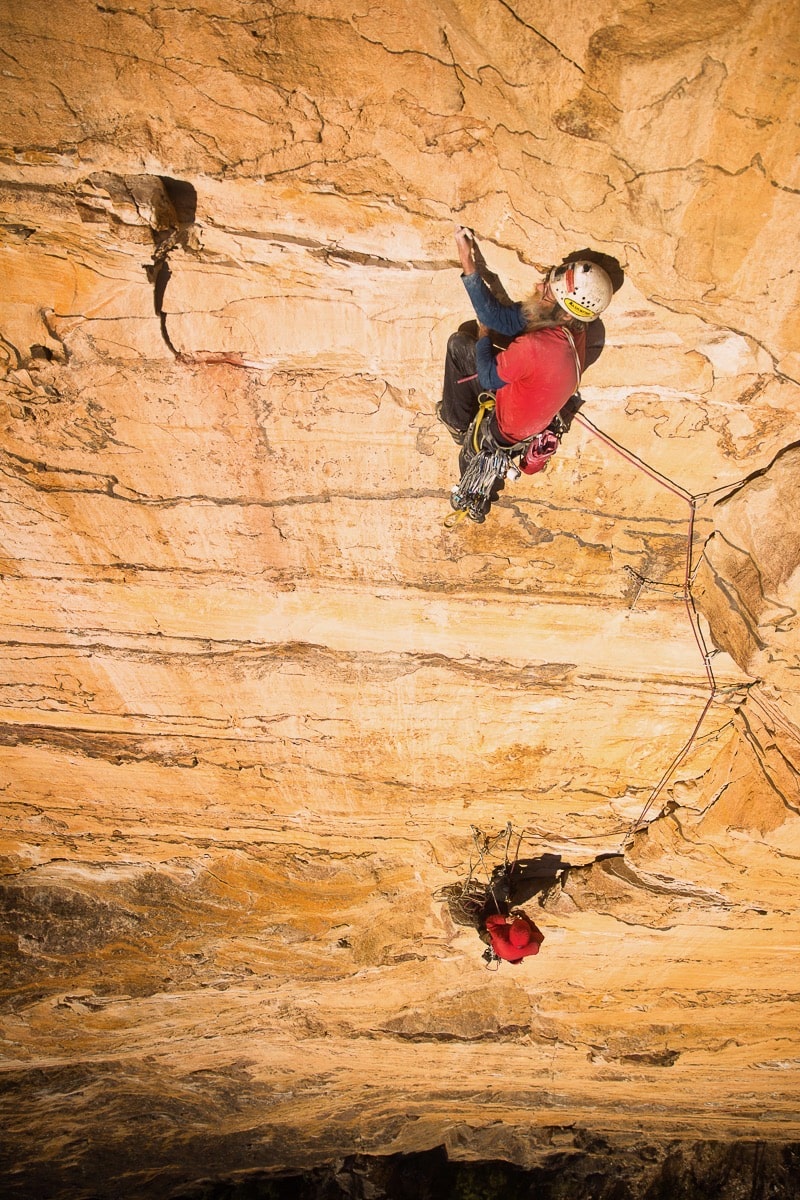
Round 2
I guess what doesn’t kill you is good training for any future attempts that might be made. In my case, this turned out to be quite an episode, with full running commentary splashed across the media.
I would like to apologise to anyone who may have felt distressed by the breaking news reports, live crosses, video streaming and general drama. If it triggered bad memories of your experience then I am sorry; if it made you feel that my selfish actions of actually going climbing during lockdown (and then having an accident on top of that) could affect access or paint climbers in a negative manner then I apologise, that was never my intention.
I am, of course, talking about my little incident out on Carne Walls in 2020.
I don’t think most climbers have ever been in quite this situation, having badly broken both their legs and a wrist in a climbing fall. To complicate the situation further, I am 70m from the top of a 200m cliff.
This time around, however, there is no anguish about my situation, or the potential effects the injury might have on my climbing. The enormity of my situation requires my full attention. I have to “keep my shit together” ignoring everything until help arrives, and beyond. The pain is so next level it is hard to comprehend… but it’s just “feedback”, messaging. The pain is in how my brain interprets it all, and it is so beyond anything I have ever felt that all I can do is accept it for what it is and deal with it. Occasionally I bash my helmeted head against the wall to distract me.
The day of the accident should have ended as yet another great day out climbing an easy, yet highly enjoyable new route; it equally could have ended earlier with one of us “going the distance” and dying earlier as we explored along high cliff edges unroped. We had just climbed a delightful first pitch of chimney, into offwidth, into hand crack and face to a small ledge and tree belay.
We could have bailed then and there, either scrambling off or rapping back down, but there was more to be explored and so I chose to climb through. I did have the option of climbing the first pitch but didn’t take it for various reasons. It’s all academic now though, and anyway, had I tried the first pitch I may have come off worse.
The accident itself was simply that, an accident, possibly even a “bumbly mistake” of not properly managing loose gear on my harness. There was no explosion of rock breaking, no desperate fight to pull the moves to safety, no fear-filled final moment. In fact, it was just bloody good fun and I was having a grand old time, until suddenly I wasn’t… I was falling. I suspect that something simply snagged and pulled me off balance as I went to do a simple move. (And yes, I was extremely runout, but was not particularly bothered by that fact.)
According to a friend, experienced in both climbing and climbing accidents, “There are two types of accidentee reports: those who admit to simple “bumbly” mistakes, and those who are liars.”
Realising what was happening, I called “falling!”—apparently fairly calmly. Then, upon evaluating the situation, I had three thoughts in quick succession: “this might not end well”, “my dodgy knee is safe for now”, and the final impassioned, pleading thought of “is there anything I can do here?”
I had little time for deeper consideration before I impacted. I had fallen cleanly over several metres before impacting the wall in a furious tumbling collision, then a few more metres as the rope finally pulled tight. Hanging on the rope semi-inverted my right leg is flopping like a dead fish, a mouth-sized hole in my lower calf.
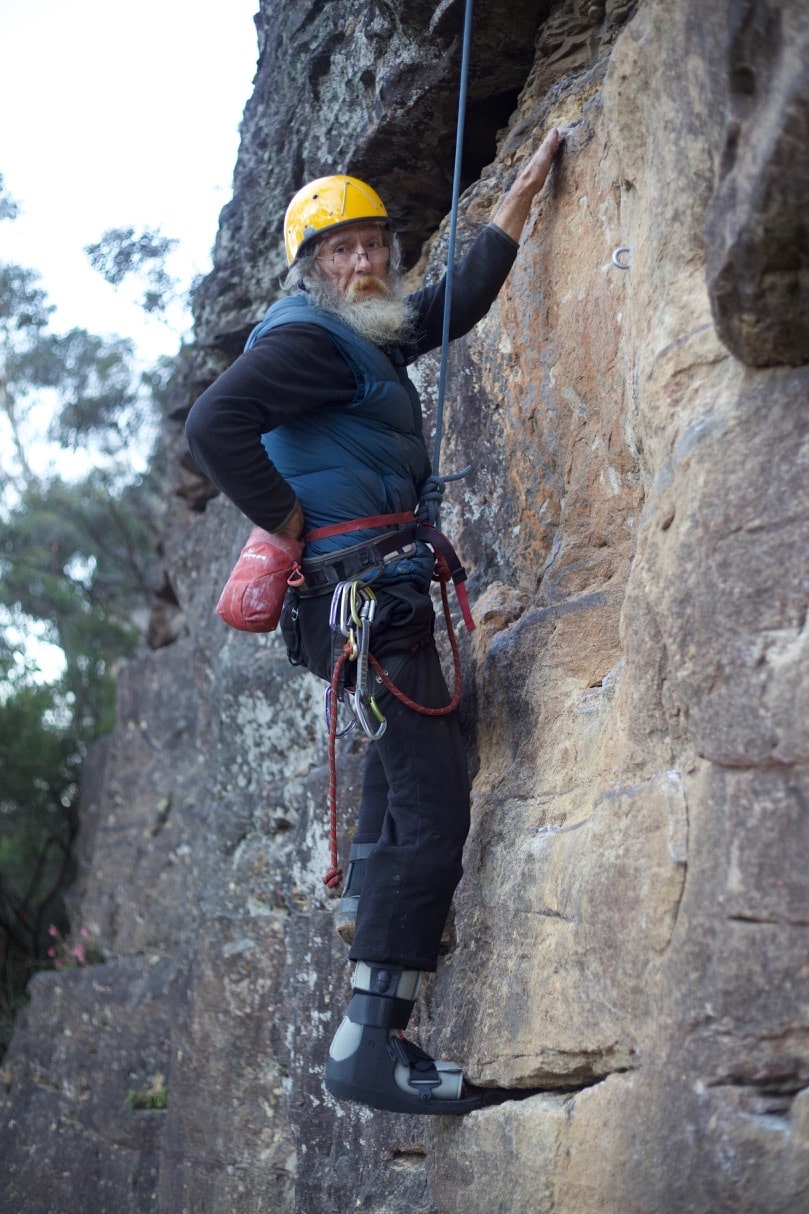
My immediate reaction to grab it grinds to a painful halt as my left wrist seizes in extreme pain. I then notice a bone sticking out from the inside of my ankle. I start to realise the gravity of my situation… I run through my injuries in my mind, imagining how I might escape my predicament best under our own steam but come up empty.
“Call triple zero, I need evac… I’ve broken my legs,” are my first words. I get lowered back down to the ledge. This will not be my Joe Simpson moment.
It only takes about an hour for the helicopter to arrive on scene, but it takes a few more before they are finally able to reach me. In the interim, Zac has been able to head to the top of the cliff with a static rope to start pre-rigging for a rescue. He somehow manages to locate us on the 100m plus expanse of the cliff line and abseils down to us as the rescue chopper arrives with the sunset.
He departs again for the top to find the Rescue Paramedics and assists them in setting their ropes in the perfect position to descend to me. Somehow they nail it perfectly, and a paramedic descends from the darkness above. My first order of business is to get my climbing shoes off, my feet are killing me. After that, he sets about his work of splinting my legs and providing initial pain relief.
A second paramedic follows with a stretcher and further supplies, both medical and otherwise. The stretcher fortuitously just fits on the ledge and we work together to get me into it. By the time this is done we are joined by Police Rescue who inform us that raising me up the cliff is not a viable option and we will need to go down.
I give as much terrain info as I can before being medicated. Helicopters are called in to light up and survey the cliff, they don’t want to miss a possible extraction point, and a plan is made to descend. It takes several hours for all of us to get down 30m where there is a low overhang where we will rest until daybreak. I come out of my stupor and entertain them with stories of my various accidents and escapades while we rest.
At daybreak we are on the move again, with some of the team moving ahead to scout and establish an extraction point, and a plan is made for a midday pickup. I need to be moved down another 20m buttress and across a slippery, sloping, shale ledge. It is a painstaking progression, and the initial rendezvous is cancelled and reset for 3pm.
The weather has been mixed, with low cloud, mist and occasional rain between slightly clearer periods. Just as we are reaching the winch site, the weather starts to turn but we are fortunate that an opening allows the chopper to finally approach us. I am finally winched into the chopper and whisked off to Westmead Hospital.
One clear pre-surgery memory for me is of being on a trolley bed with a doctor getting all in my face and serious and telling me, “There’s a 20 percent chance you won’t have a left foot when you wake up, sorry.”
“Nah mate, it’s 50/50. I’ll either have the foot or I won’t. Don’t just go cutting my toes off to get your 20 percent,” I reply, knowing full well that they will do their best.
They say, “Laughter is the best medicine.” In many ways that’s true, unless you have fractured ribs. But when confronted with bilateral external fixators on your lower legs, like a young Forrest Gump, it’s a slightly different situation. It’s 50/50. You either laugh or you cry. And crying isn’t going to get you anywhere in the greater scheme of things now, is it? So all that’s left is to laugh, to survive.
It helps to reframe one’s worldview in a more positive light, one which can cope with the situation at hand—or foot as the case may be. So, looking down at my encaged fractured legs, all I could do was laugh. The empathy, well wishes and donations from the climbing community however, reduced me to tears.
Little did I know at that point that I would undergo several operations over the next few weeks, including skin graft and free flap surgery, all whilst on extraordinary pain relief, and spend the first 28 days confined to bed before being allowed to dangle one leg over the side for five minutes. Neither did I realise that the exfix on my right leg would remain on for 40 days of my 10 week stay in hospital, nor that I would be back before Christmas for bone graft revision surgery for nonunion of my tibia. With a positive outlook I started to recover, only for the titanium plate in my leg to break somehow, sending me back for replacement surgery and another bone graft.
Ultimately I would spend most of the following two years with a wheelchair as my main means of getting around. Then it was moon boots for several months non weight bearing, and several more months partial weight bearing on either, then eventually both feet as my recovery took its various side steps. Eventually progressing through various crutch phases to trekking poles and finally a single walking stick which I still use (or trekking poles for bush walks).
Just over two years after my incident, I was finally signed off by my surgeon as “healed”… 730 days, over 17,500 hours, more than a million minutes. I don’t really feel that my right leg is as solid as it should be, but I am told that it is all okay… Time to climb!
Round 3
I think most climbers would agree that if you are committed to a concept and keep at it then you will finally get there. I had spent a great deal of time in my wheelchair and gained considerable skill at wheelies, small drop-offs and had even spent a bit of time at skate parks. You’re probably thinking that this will probably lead to me breaking my legs again, but no, I’m not that silly.
This time, after falling out of the wheelchair rather badly in steep terrain at Lithgow Skate Park, all I had was an extremely sore hip and non-responsive leg, probably just corked and easily walked off. There are distressed dads with impressed kids wondering if I want them to call me an ambulance, but I really don’t want to upset the kids, or cause them to suspect their safety. I defer their offer and simply ask to be helped back to my gear.
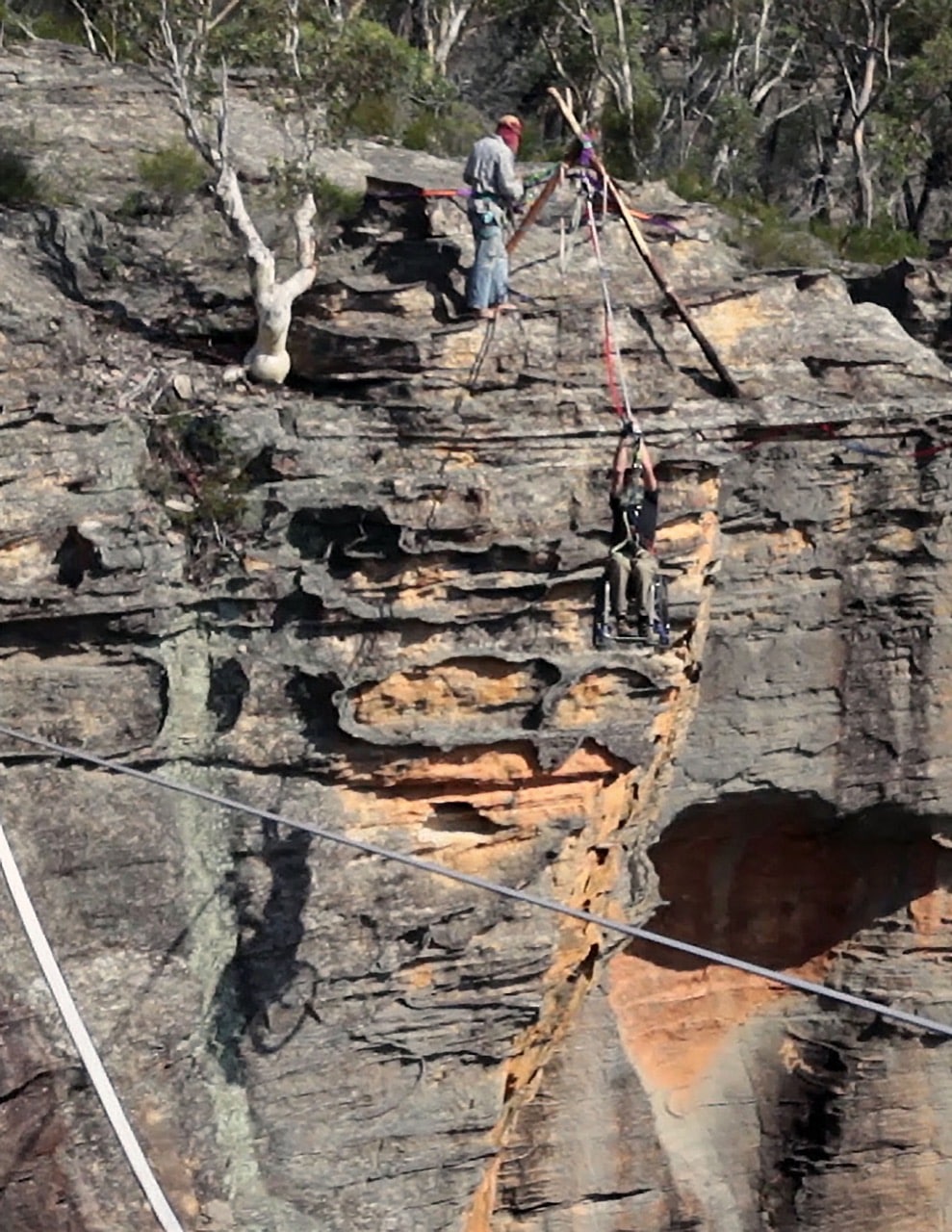
By the time I painstakingly manage to get to my car, I am starting to realise the reality of my situation … I finally have my chance for my own personal Joe Simpson moment!
The hospital is only about a kilometre away down the main road—I could crawl that far if needed. But I don’t feel like leaving my car in the dimly lit car park, so I decide to drive instead. Getting me and my wheelchair into my ex-military Land Rover is an agonising exercise but I manage it within an hour or two.
After a short rest I begin driving, using my walking stick as my right leg and in a few frustrating minutes I am at the hospital, pulled up outside Emergency, beeping my horn… I’ve made it! The hospital staff investigate the commotion, find me and after I have explained my condition they leave and return with… a wheelchair! I can only laugh at my situation, and after several excruciating attempts to be assisted out, I resort to throwing/lowering myself out of the car screaming straight into the chair.
They aren’t sure what is wrong with me, the long section of my femur feels intact upon inspection. I’m given minor pain killers whilst we await the arrival of the after hours radiologist.
“Oh, wow… Okay, we’d better get you some better pain relief. You have a full neck of femur fracture,” he says.
Essentially my hip bone was not connected to my leg bone, which accounts for the major loss of function I had experienced earlier. It also means that driving to the hospital was probably one of the most stupid things to do given possible internal bleeding.
Transferred to a more major hospital the next day, I have another agonising day’s wait before finally reaching surgery and getting patched up. After a couple of weeks I am ready for discharge, but I’m basically back in my wheelchair again for any distance travel, and crutches for anything else. Slowly but surely I start to regain my feet, but it is difficult in a different way. I am tired of being injured and recovering against the odds. But here we go again, learning to walk again for the third time. How hard can it be…?
Aftermath
I don’t think most climbers are likely to inflict such injuries upon themselves, being generally more risk averse, but accidents can happen to any of us. I do think that any climber could have gotten through the dramas that I managed—there is nothing particularly special about me—and I dare say many could have recovered better as I am not the most focussed when it comes to “training”.
I have simply been able to hang on through this extended crux in the hope of easier climbing ahead.
So how is the recovery? I don’t even think that is an appropriate term anymore… Recovery suggests regaining and returning to previous standards, but that simply isn’t possible sometimes. “Re-discovery” is perhaps a better term that gives some inkling of the process involved in discovering again how to do all those things you took for granted… Like walking, for instance. After my knee injury I had to learn to walk again, then having barely managed that, my broken legs put an even bigger dent in that ability, before the hip put the proverbial cherry on top. For five years I have been relearning how to walk, and quite frankly a five year old kid does it better than me.
I have often found myself commenting that I wish for the “old me” and all that I used to do, but then I realise that the “new me” is still the same me, just different. Like a climb can change as we grow familiar with it, so it is with myself. I am discovering new sequences around broken and missing holds. Climbing can be frustratingly fun as I have to discover new sequences that suit my condition. At the same time, I try to commit fully to the difficulties before me so that I regain that feeling of climbing hard, regardless of grade.
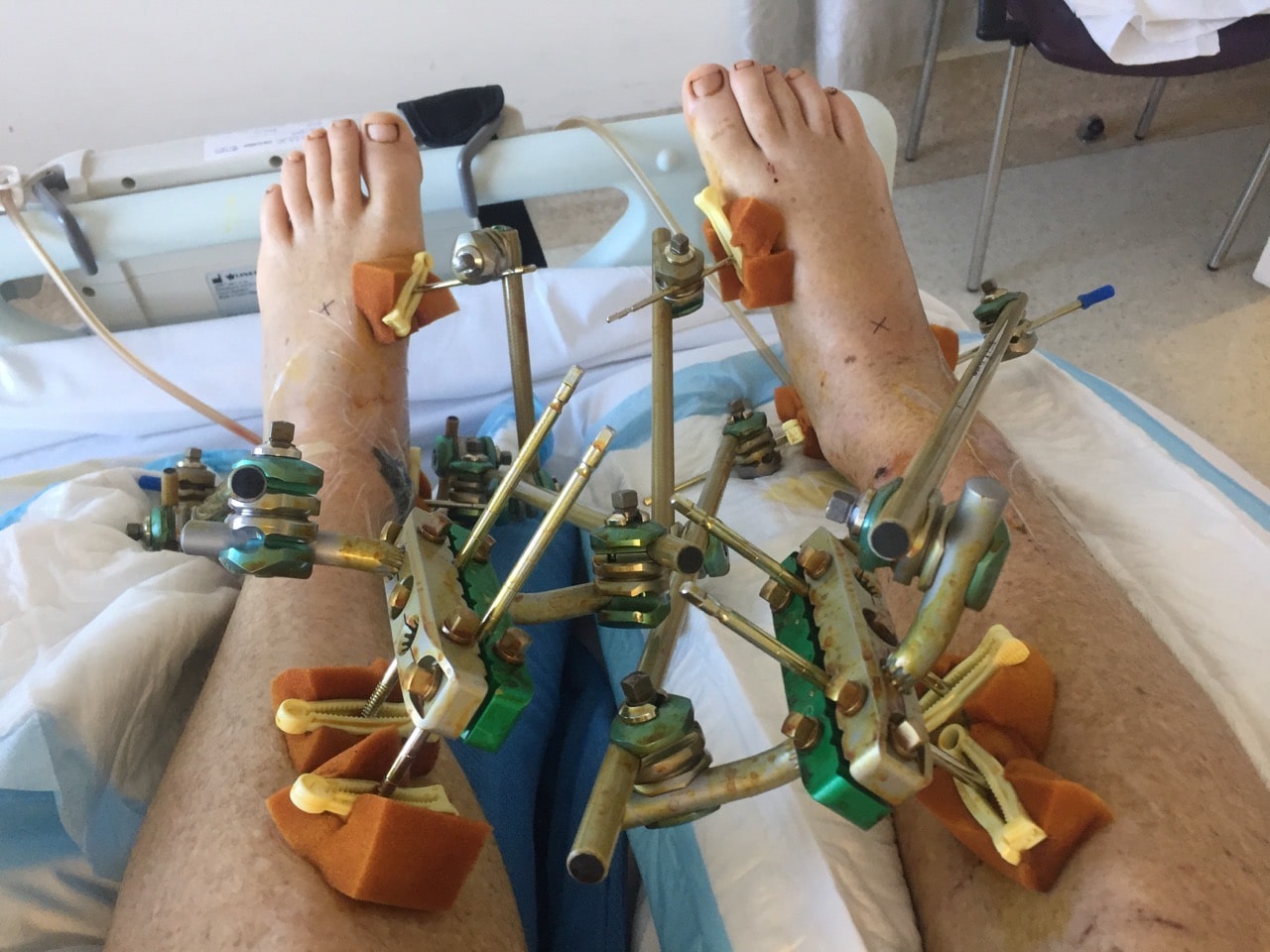
My eternal gratitude goes to my daughters, Raien, Shana and Taryn; my climbing partner Zac; Emily & Dave; and all those who donated to help my recovery. I would never have gotten through this without your support.
“Climb if you will, but remember that courage and strength are nought without prudence, and that a momentary negligence may destroy the happiness of a lifetime. Do nothing in haste; look well to each step; and from the beginning think what may be the end.”
— Edward Whymper
“I figure the odds be 50/50…”
— Frank Zappa / Macciza

